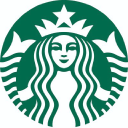Starbucks Could be Too Expensive for Chinese Tastes
China is an integral part of Starbucks’ (NASDAQ:SBUX) international expansion policy. The company currently has 500 branches in China with an aim to open up another 1,000 by the year 2015. [1] Compare that to its 11,000 stores in US and it may look like there’s just too much growth waiting to take place. We believe there are aspects other than the number of stores which you should take into account to reach at a valuation for Starbucks.
We estimate a $39.80 price for Starbucks, a little below the market price.
See Full Analysis for Starbucks Here
- Starbucks’ China Sales Decline Amidst Intensifying Competition
- Starbucks Stock Can 2X Now
- Here’s How Starbucks Stock Could Grow To $190
- Down 23% This Year, Will Starbucks’ Stock Recover Following Q3 Results?
- Can Starbucks’ Stock Rise 55% To Its Pre-Inflation Shock Highs?
- Down 22% YTD, What Lies Ahead For Starbucks’ Stock?
Intense Competition
Firstly, a country with a population of 1.3 billion people with a burgeoning middle class lures not only Starbucks but other global coffee players as well. Costa Coffee, a British coffee major, seems to be taking even a more aggressive route than Starbucks’. [1] The company opened its first store in China in 2006 and currently has 100 stores. Moreover, it plans to open another 2500 stores by the year 2018. And it is taking directly on Starbucks, trying to open as close to Starbucks as possible. Too much competition can put to a downward pressure on the prices and drive down the EBITDA margin. Starbucks currently enjoys a healthy EBITDA margin in its Franchisee stores. As revenues from China increase, it will have a greater impact on the overall EBITDA margin.
Purchasing Power Disparity
Consider China’s per-capita income in terms of purchasing power. For rural population, it is around $3,500 and for urban population, it is close to $11,500. Now, compare that to the national average of $47,000 for US. [2] Even if you compare the urban income to the national average for US, it is roughly 1/4 times. Thus, Chinese people pay a disproportionately higher price for the same coffee than US people. If we were to take into account this factor of ‘4’, it would mean that an average American needs to shell out $ 10-15 for a cup of coffee (i.e 4 times the current price). Not too many Americans would then buy coffee, would they ?
Hence, stores in China would be characterized by a lower spend per customer and the volumes will also be low.
Starbucks has successfully passed on the price hikes to consumers in recent years, but due to this purchasing power disparity, the sensitivity of price hike will be higher in China. Starbucks also plans to open stores in India in 2012 and Vietnam thereafter. It will face similar complexities in such markets. (Read more on Starbucks’ Asia plans in our earlier article, Starbucks Brews up Big Growth in Asia)
Understand how a company’s products impact its stock price at Trefis
Notes:- Coffee Wars in China: Starbucks vs Costa, Worldcrunch, November 24, 2011 [↩] [↩]
- How Much Growth Awaits Starbucks in China, The Motley Fool, September 29, 2011 [↩]
